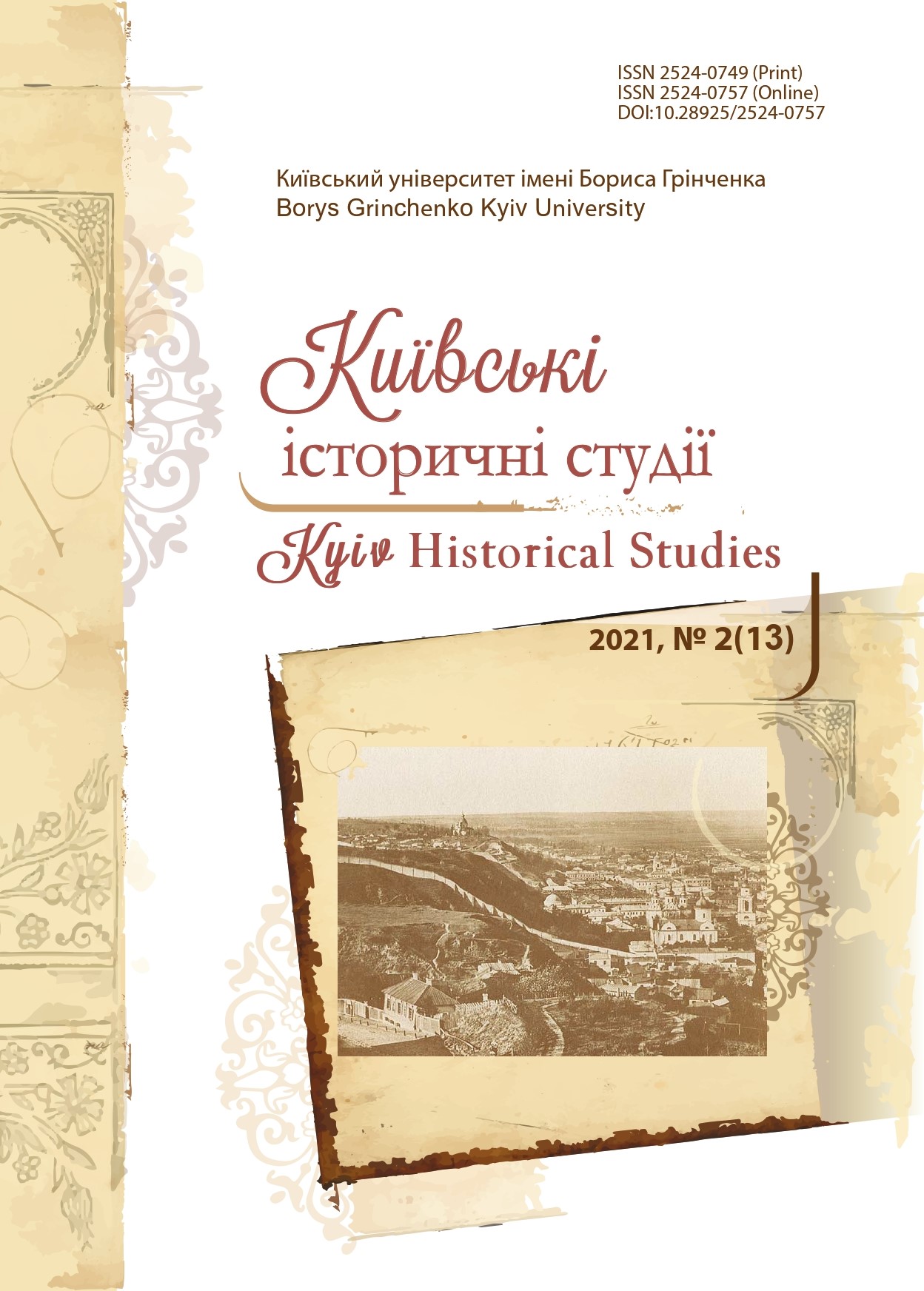Abelard and Heloise: personal relationship in the socio-cultural context of the 12th century
DOI:
https://doi.org/10.28925/2524-0757.2021.27Keywords:
Peter Abelard, Heloise, teacher, student, High Middle Ages, marriage, celibacy, sexuality, castrationAbstract
The 12th century was a controversial period of deepening ecclesiastical influence on all strata of the population, strengthening church prohibitions, expansion of convents; the century of establishing a new stratum of intellectuals, the first rise of women role in society and the formation of the courtly culture’s foundations. Philosopher Peter Abelard and his student Heloise were chosen for examination by us as the bright personalities of the 12th century, a product of medieval society and the voices of their time. An exceptional historical case of well-documented reliable information on the personal relationship allows us to correlate the world-view of lovers and their lives with the socio-cultural realities of High Middle Ages. The aim of the article is a historical analysis of the relationship between the philosopher-teacher Abelard and the student Eloise in the socio-cultural context of the 12th century. In previous studies scholars have only indirectly touched certain aspects of the teacher-student relationship in the context of intimate gender relations of the High Middle Ages. We analysed the autobiography of Peter Abelard, the letters of Abelard’s contemporaries, his correspondence with Eloise. We arranged scientific achievements of historians and examined personal life of the couple against the background: tactics of seduction, intimacy, determining and understanding the relationship status, men’s standing in society after castration. Emphasis is placed on the progress of 12th century’s social consciousness in the light of the personalities’ world-view analysis. A division between individual views and the Catholic medieval outlook is analysed. Through the study of the transformation of the relationship between teacher and student, and future lovers, we have shown that the views of Eloise and Abelard illustrate a feasible range of medieval perceptions of the relationship, in tune with the new era challenges, yet integral to its time.
Downloads
References
Bessmertnyi, Y. L. (1991) Zhizn i smert v srednie veka. Ocherki demograficheskoi istorii Frantsii. Moskva: Nauka [in Russian].
Brooke, C. N. L. (1956) Gregorian Reform in Action: Clerical marriage in England, 1050–1200. Cambridge Historical Journal, 12(1), 1–21 [in English]. DOI: https://10.1017/s1474691300000305.
Brooke, C. N. L. (2002) The Medieval Idea of Marriage. New York: Oxford University Press [in English].
Brundage, J. A. (1987). Law, Sex, and Christian Society in Medieval Europe. Chicago, London: University of Chicago Press [in English].
De Libera, A. (2004) Srednevekovoie myshlenie. Moskva: Praksis [in Russian].
Dubi, G. (1990). Kurtuaznaia liubov i peremeny v polozhenii zhenshchin vo Frantsii XІІ v. In A. Ya. Gurevich (Ed.), Odissei. Chelovek v Istorii (pp. 90–96) [in Russian].
Duby, G. (1991) Medieval Marriage: Two Models from Twelfth-Century France. Baltimore: The Johns Hopkins University Press [in English].
Duby, G. (2002) Vremia soborov. Iskusstvo i obshchestvo 980–1420 godov [The Age of the Cathedrals: Art and Society 980–1420]. Moskva: Ladomir [in Russian]
Fedotov, G. (1924) Abeliar. Peterburg: Brokgauz-Efron [in Russian].
Hartnell, J. (2019) Medieval Bodies: Life, Death and Art in the Middle Ages. Moskva: Izdatelstvo AST [in Russian].
Irvine, M. (2015). Abelard and (Re)writing the Male Body: Castration, Identity, and Remasculinization, In Becoming Male in the Middle Ages, Cohen & Wheeler (Eds.), (pp. 87–106). New York: Routledge [in English]. DOI: https://doi.org/10.4324/9780203765227
Karras, R. (2017) Sexuality in Medieval Europe: Doing Unto Others. London; New York: Routledge. [in English]. DOI: https://doi.org/10.4324/9781315269719
Le Goff, Zh. (2003) Intellektualy v Srednie veka. [Intellectuals in the Middle Ages]. Sankt-Peterburg: Izdatelstvo Sankt-Peterburgskogo universiteta [in Russian].
Le Goff, Zh., & Trjuon, N. (2008) Istoriia tel v srednie veka. Moskva: Tekst [in Russian].
Parsons, B. (2018) Punishment and Medieval Education. Woodbridge: Boydell & Brewer [in English]. DOI: https://doi.org/10.1017/9781787443211
Pernu, R. (2005). Eloiza i Abeliar. Moskva: Molodaia gvardiia [in Russian].
Togoeva, O. (2007). Unizhennyie i oskorblennyie: muzhskaia chest i muzhskoie dostoinstvo v srednevekovom sude. In Boitsov M. A. & Danilevskii I. N., Kazus. Individualnoie i unikalnoie v istorii. Almanakh — 2006 (pp. 71–101), Moskva: Nauka [in Russian].
Togoeva, O. (2018) Dela ploti. Intimnaia zhizn liudei Srednevekovia v prostranstve sudebnoi polemiki. Moskva, Sankt-Peterburg: Tsentr gumanitarnykh initsiativ [in Russian].
Waithe, M. E. (1989). Heloise. In A History of Women Philosophers A.D. 500–1600 (pp. 67–83). Dordrecht etc.: Kluwer Academic [in English]. DOI: https://doi.org/10.1007/978-94-009-2551‑9
Published
How to Cite
Issue
Section
License
Copyright (c) 2021 Олег Шевченко, Айрін Кліппенштейн

This work is licensed under a Creative Commons Attribution-NonCommercial-ShareAlike 4.0 International License.
Authors who publish in this journal retain the right of authorship of the work and give to the journal right of first publication of this work under the conditions of Creative Commons: Attribution-NonCommercial-ShareAlike 4.0 International (CC BY-NC-SA 4.0), which allows others freely distribute the work published with reference to the authors of the original work and the first publication of this magazine.














